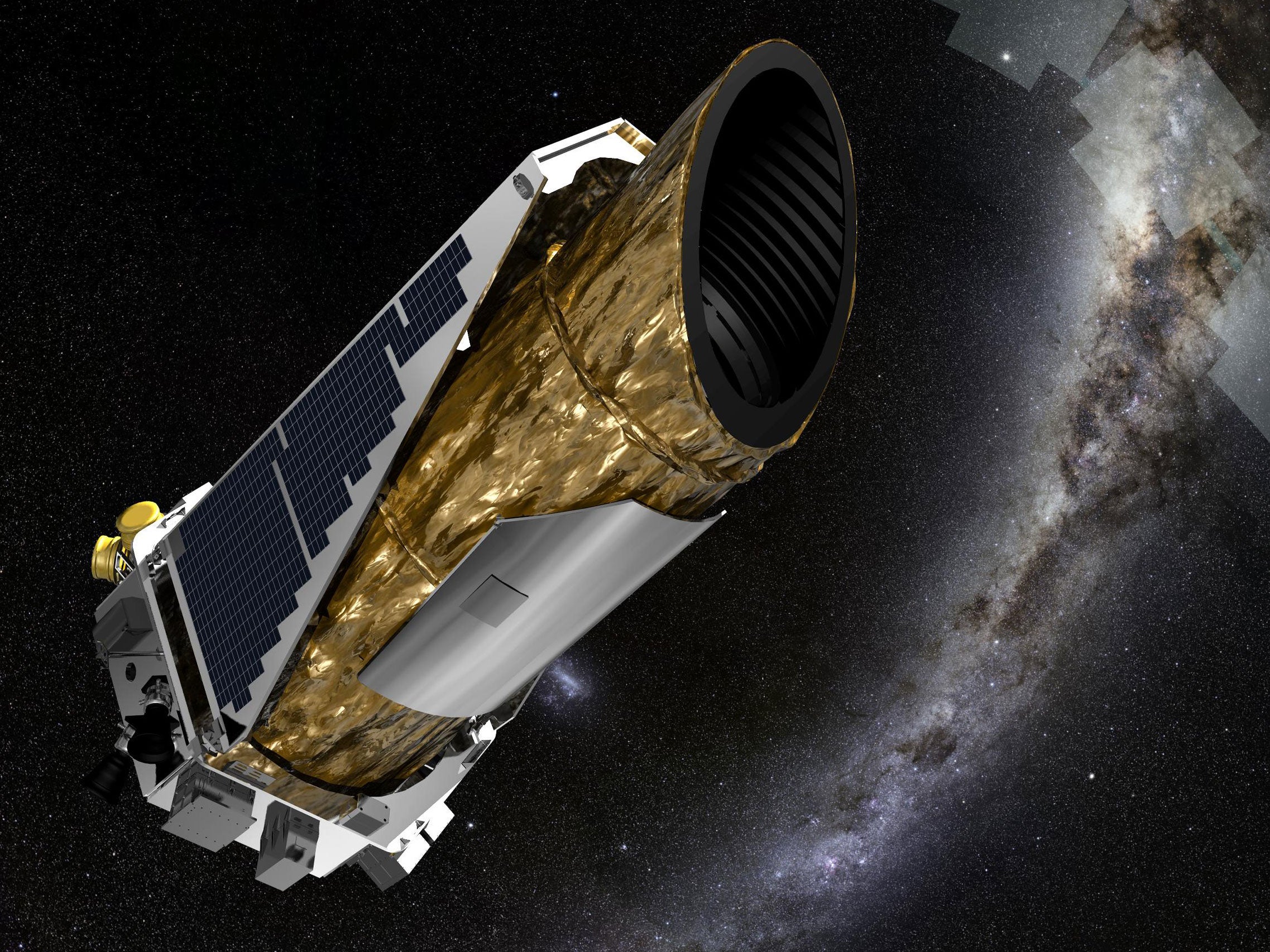Kepler spacecraft stuck in 'emergency mode' as Nasa works to revive one of humanity's most important telescopes
The craft is 75 million miles away, and it takes messages 13 minutes to get to it

The Kepler planet-hunting spacecraft is stuck in a state of emergency and Nasa scientists are working to try and bring it back from its crisis.
The space observatory sits 75 million miles away, finding planets deep in the universe — partly in an attempt to find “other earths” where life might be. But it is having trouble doing so, and has been placed in emergency mode.
Controllers found the spacecraft’s problem last week, when they were moving to point the telescope to look towards the Milky Way. It was hoped that Kepler could join up with ground observatories to look at millions of stars in our galaxy — in the hope that it could spot other planets far from their suns, like those that sit in our solar system.
It was never able to get around, however, and has been placed in a state of emergency. Nasa’s “priority” is now getting the observatory back from the condition.
But doing so is tough because the craft is sitting 75 million miles from Earth and it takes a long time for any communication to get to the craft and back.
"Even at the speed of light, it takes 13 minutes for a signal to travel to the spacecraft and back," mission manager Charlie Sobeck said in a weekend web update from NASA's Ames Research Center in Mountain View, California.
Nasa said that the last time it had made normal contact with the craft was on 4 April. Then it didn’t seem to be having any problems and was “operating as expected”, said Mr Sobeck.=

If Kepler doesn’t make it out of its current problems, it will still have easily done the work that scientists had hoped it would. It has discovered 5,000 planets since it was launched in 2009, 1,000 of which have been confirmed.
And its planned mission finished in 2012. Since then, it has suffered repeated problems but has been carrying on with a mission called K2.
In its second stage it has still been doing important work, such as the discovery of the planet Kepler 425b — dubbed Earth 2.0.
Join our commenting forum
Join thought-provoking conversations, follow other Independent readers and see their replies
Comments
Bookmark popover
Removed from bookmarks